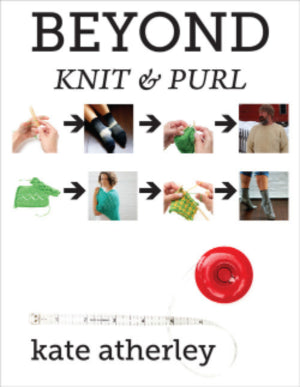I taught a class this past weekend on Fixing Mistakes in Lace. It's a very rewarding class to teach, as I'm helping knitters build very useful skills.
And it's a class full of "aha" moments. The first big one is when the students realize that they don't have to rip back to put in a missed yarnover. And the next is the discovery of the lifeline and its value in saving lives.... Well, ok, saving hours of knitting and ripping time, at the very least.
Two students were attending the class because they were participating in an online knit-along for a first lace project. One of them brought her swatch to show me. Now, if you've ever met me, you'll likely know that I have a lousy poker face... I'm really not good at disguising my feelings about something.
I was shocked when I saw the swatch - and I expressed that shock.
The knitter in question, B., seemed initially surprised (and probably a bit upset) at my shock. I think she thought I was shocked at the quality of her work.
Precisely the opposite: her work was great... I was shocked at the project. It was a pretty complex lace pattern - looked like a 20+ stitch, 20+ row repeat, worked in slightly fuzzy, 2-ply laceweight. I asked a few questions. Yes, this was advertised as a "beginner" lace project. Yes, this was the yarn recommended.
In my mind, that ain't no "beginner" lace project. No matter how good the online support, that's a challenging project.
My first couple of lace projects were fairly disastrous. There was so much ripping and reworking and cursing and perhaps even a few tears. And I'm so glad about that! I'm glad about that because I believe that experience makes me a better teacher. I remember that working with a fine and delicate laceweight yarn was intimidating and difficult. I did much better when I changed to a sturdier and smoother sock yarn. I remember that I did a lot better at first with a smaller lace repeat. I remember that being taught about a lifeline was critical to my enjoyment and success with the project.
Now, I don't wish to impugn the designer who is leading the knit-along. This person has made the choices of yarn and pattern for specific reasons, I'm sure. But this raises an interesting question: how does an experienced knitter decide what's 'easy'? What makes a good beginner-friendly project?
As a life-long knitter, what I find easy isn't at all what a newer knitter finds easy. I strongly believe that the best teachers are the ones who stay in touch with the learning process - the ones who stay in touch with how students learn. I love teaching in-store classes, and I don't think I'll ever give this up. These classes keep me engaged with newer knitters and they challenges they experience. I learn so much from the questions I get asked.
As an experienced knitter, there are so many things I just don't think about, so many things I take for granted... for example, I never questioned what a pattern meant when it said to "work even". It never occurred to me that this needed explaining. But I get asked about it at least once a week - this is a good reminder! It's important to listen to knitters read through instructions and ask questions about them.
And taking an example from this weekend's class, I find it easy and obvious to pick up a missed yarnover - I've done it thousands of times. But it's important to watch a knitter do this for the first time, and struggle with figuring out which way round to work into the yarnover. Watching reminds me why it's not obvious and not easy this first few times.
I'm grateful for my own awful knitting experiences. I'm grateful for newer knitters. I'm grateful for the "silly" questions. They make me a better teacher.
Subscribe to:
Post Comments (Atom)






No comments:
Post a Comment